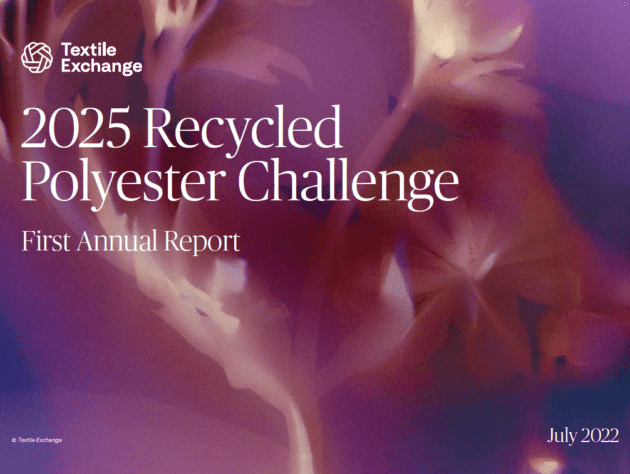The 2025 Recycled Polyester Challenge was designed to accelerate change.
The Textile Exchange 2025 Recycled Polyester and Cotton Challenges will conclude at the end of 2025, with final reporting to occur in the 2026 reporting cycle. As such, we are no longer accepting new participants in these Challenges. However, we are currently working on updated challenges, which will be called ‘Commitments’ and will be developed in consultation with industry stakeholders in 2025. The first iteration of our new Commitments will launch in 2026. Please contact commitments@textileexchange.org if you are interested in providing input into the development of the new Commitments, and stay tuned for more updates via Textile Exchange communications channels.

Polyester is the most popular material used in the fashion and textile industry. This reliance on virgin fossil-based materials is damaging to our environment, but there’s no other fiber on the market today that could absorb this demand. That’s why we’re challenging the fashion and textile industry to increase the market share of polyester that comes from recycled sources from 14% in 2019 to 45% in 2025.
DEVELOPMENT
We launched this joint initiative with the UNFCCC.
In April 2021, we teamed up with the United Nations Framework Convention on Climate Change’s Fashion Industry Charter for Climate Action to launch the 2025 Recycled Polyester Challenge. Together, we’re setting out to spur a shift in the market towards the uptake of recycled polyester and its associated reduction in greenhouse gas emissions.
GOALS
Our goal is to reduce the industry’s reliance on fossil-based resources.
The 2025 Recycled Polyester Challenge calls on companies to commit to sourcing from 45% to 100% of their polyester from recycled sources by 2025. Our goal is to stop new fossil-based synthetic fibers from entering the system, rather than substitute other material categories or justify increased industry growth.

INSIGHTS
The 2025 Recycled Polyester Challenge in numbers
The number of Recycled Polyester Challenge signatories in 2025.
Signatories committed to replacing 100% of their virgin fossil-based polyester with recycled by 2025.
Signatories that have already reached their target.
Spotlight On
Discover Progress Made
The Recycled Polyester Challenge Dashboard tracks participating companies’ progress toward replacing all or part of their virgin polyester with recycled by 2025.

Explore
Dive deeper into the requirements
When signing up to a material challenge, companies agree to a set of requirements, as well as to respect our values of integrity, inclusive community, learning, and collaboration.
LEARN MORE
Find out more about polyester production
Read about the sustainability challenges that come with conventional polyester production, the opportunities to overcome them, and the steps you can start taking to reduce your impact.